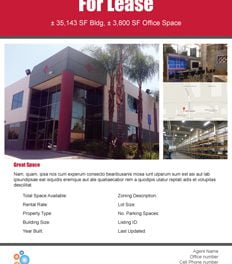This article analyzes how a homeowner can reduce his property taxes when real estate values decrease by applying to the county assessor to set the assessed value of his property at its fair market value.
Downsizing government’s take
In the current California real estate market of measurable monthly declines in property value, the assessed value of real estate purchased after 2002 is now greater than its current fair market value. 2010 will certainly bring even more distortion between these values.
Since property taxes paid to the county tax collector are based solely on the assessed property value, large numbers of property owners are, and will be, paying property taxes greatly beyond the amount they should rightly pay.
The culprit is the excessive assessment on their property. Property owners can correct the excessive assessment by filing an application with the county assessor at any point during the calendar year.
Brokers and their agents, as the gatekeepers to the public’s entry into real estate ownership, now have an opportunity to help property owners weather the current economic storm by keeping the cost of ownership down.
Brokers and agents who assist a property owner lower their property taxes will not likely close an escrow today, not even in two or three years due to their assistance.
However, assisting an owner to lower his property taxes will be remembered and appreciated when it comes time for that owner to sell their property. Thus, the broker or agent who invests time today educating and assisting the owner of his right to save money, at a time when the savings may be crucial to their survival as a property owner, will yield handsome fees when the pace of property sales picks up again.
A broker and his agent may charge a fee for assisting a property owner to reduce his property tax bill. A percentage of the reduced amount of taxes or a flat fee would be appropriate compensation. However, they could also perform the services at no charge since the benefit the broker or agent would hope to receive for their assistance is referrals and a listing of the owner’s property for sale.
Whole neighborhoods are underwater and waiting to be farmed by a broker or agent willing to think about his future income. By investing time and effort now – no money –owners will remember who helped them cut their living costs as they are forced to cut back on basics, even their shelter.
Brokers or their agents may act as a property owner’s representative in the preparation of the application and contact with the assessor’s office, even the appeals process if need be. It is an economically sound investment of time and expertise for brokers and agents looking beyond their current cash flow crisis to set the foundation for future business and earnings.
A basic understanding of assessments and taxes is first needed to implement or advise clients on the reassessment procedure. The formula used by the county tax collector to set the tax due from an owner of a parcel of real estate is based on the:
- assessed value of a property, also called the taxable value; and
- tax rate set by law.
The assessed value of each parcel of real estate is determined annually by the county assessor, and is the lesser of the parcel’s:
- base year value on the last change of ownership, adjusted upward annually at the inflation rate limited to 2%; or
- fair market value on the lien date, January 1st, of each year.
The tax rate in turn is limited to 1% of the assessed property value, plus amounts due on any bonded indebtedness or special assessments.
By filing an application with the county assessor, a diligent property owner can lower his property tax when the fair market of his property has dropped below its current assessed value.
Reassessment on request
To reduce the taxes due on a property, the property owner applies for a reassessment using an Application for “Decline in Value” Reassessment (Proposition Eight) form (or its equivalent) published by the county where the property is located. [See sample Application for “Decline in Value” Reassessment (Proposition Eight)]
To apply for reassessment, the owner submits the “Decline in Value” form (or its equivalent) to the county assessor of the county where his property is located. The application must be accompanied by evidence which establishes the property’s market value is lower than the current assessed value of the property. Appropriate documentation submitted with the application consists of identification and analysis of comparable properties which sold (closed escrow) between January 1st and March 31st of the year the application is filed. [See first tuesday Form 318]
The owner may also submit documentation evidencing the property’s value in the form of listing information for comparable properties or an appraisal report from a private appraiser or lender. Comparable property information can be obtained from www.redfin.com, www.zillow.com, or your local title company.
On receipt of the application by the county assessor’s office, they will determine the property’s value as of January 1st. If the market value of the property, as supported by the comparable sales documentation submitted with the application, is lower than the current assessed value on the assessor’s records, then the assessed value of the property will be reduced to its current fair market value. As a result of the lowered assessed value, taxes for the assessment year following the January 1st lien date will be lower by the same percentage as the reduction in the assessed value.
Each year after the county’s acceptance of the “Decline in Value” application, the county assessor will automatically set the assessed value as the lesser of the current fair market value of the property or the inflation adjusted base year value. The future annual reassessments to fair market value will never set an assessed value greater than the maximum assessment allowed by the annual maximum inflation adjustment (2%) on the owner’s original base year value.
If, on the annual reassessment review following the year of the reduced assessment, the county assessor determines the market value of the property has increased to an extent that it now exceeds the maximum inflation adjusted amount of the owner’s base year value, the assessed value will revert to the maximum inflation adjusted assessed value of the property. Once the amount of the regular maximum annual adjustment is reached, the property will no longer receive an annual review but will automatically be assessed using the base year value, adjusted annually at an inflation rate not to exceed 2%.
Additionally, if the county does not initially accept the “Decline in Value” application and therefore does not reassess the value downward, the assessed value will remain at the maximum inflation adjusted value and the county will not conduct an annual reassessment review in subsequent years, unless another application is submitted.
Consider a buyer who purchases property for $100,000. In the second calendar year of ownership, the market value of the property is rises to $115,000. Under Proposition 13, the assessed value of the property is automatically adjusted to $102,000 ($100,000 base year value + 2% inflation ceiling), not the market value of $115,000.
During the third calendar year of ownership, the market value of the property drops below the Proposition 13 assessed value limit and the owner files an Application for “Decline in Value” Reassessment, with supporting documentation and analysis of comparable sales occurring between January 1st and March 31st of the third calendar year. The application is approved by the county assessor and the assessed value is lowered to the parcel’s current fair market value. Thus, the assessed value of the property for years three through five is set by the county as the parcel’s current fair market value – below what would otherwise be the annually adjusted assessed value.
However, in the sixth calendar year of ownership, the value of the property rises to $120,000, exceeding the Proposition 13 assessed value adjustment limit. The assessed value is then restored to $110,408 ($102,000 + 2% compounded for each successive year).
In the seventh calendar year of ownership and beyond, the market value of the property continues to increase steadily. However, the assessed value is restricted to the base year value established at the change of ownership seven years before, plus the maximum annual 2% increase.
Appeal for reassessed value
If a property owner believes the assessed value of his property is set too high, or his application for reassessment is rejected, he can appeal the assessed value of his property through his local assessment appeals board or county equalization board.
A property owner can only appeal the assessed value of his property set by the county assessor, not the tax rate used by the tax collector. The tax rate (1%) is set by law and cannot be lowered by appeal (or raised by the tax collector).
An assessment appeals board can:
- lower or raise a property’s assessed value;
- remove a penalty or assessment imposed by the county assessor; or
- reverse a reassessment for a change of ownership or new construction.
All appeals must be filed using the Application for Changed Assessment form published by the county where the property is located. [See sample Application for Changed Assessment Form]
A separate application must be filed for each individual property.
The application to correct an erroneous reassessment can be filed by any individual responsible for payment of the property tax, such as the property owner, his spouse, children, parents, trustee, guardian, etc. It can also be filed by an agent on behalf of the owner provided he has signed authorization from the owner to do so, except for an attorney licensed in California.
The period for filing an appeal for changed assessment is more restrictive and does not apply to the filing period for an application for reassessment on a decline in value. The yearly period for filing an appeal is:
- July 2nd through September 15th for a regular assessment if the county mails all assessment notices by August 1st;
- July 2nd through November 30th for a regular assessment if the county does not mail all assessment notices by August 1st;
- within 60 days of mailing a supplement assessment resulting from a change of ownership or new construction;
- within 60 days of mailing an escape assessment for events affecting the assessed value of a property which happened in prior years but were not discovered by the county assessor; or
- within six months of mailing a supplemental assessment notice for natural disasters or calamities that damaged the property.
If the appeal for changed assessment is accepted, an assessment appeals hearing may be arranged in which the property owner can present evidence establishing the property’s market value as being lower than the base year value. Most county appeals boards have their own local rules and guidelines.
Editor’s note – Filing an application for decline in value or an appeal for change in assessment does not obviate the property owner’s obligation to pay his property taxes. If an application is approved, a refund of the excess taxes will be paid to the property owner by the county, unless he did not pay his property taxes, in which case nothing is refunded by the county.













